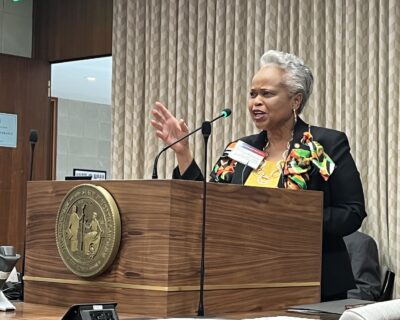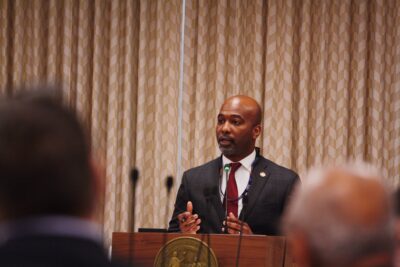|
|
This article was originally published in the N.C. Tribune.
State leaders have shortchanged N.C. A&T State University to the tune of a little under $2.1 billion over the past 30 years alone, hobbling it relative to the state’s other land-grant university, the Biden administration says.
N.C. A&T’s shortfall relative to N.C. State University is the second-largest disparity among the 16 states the U.S. Departments of Education and Agriculture targeted with letters issued Monday.
The largest was in Tennessee, where Tennessee State University should have received more than $2.1 billion if the state funded it equitably with the University of Tennessee in Knoxville.
The letter addressed funding disparities between older, predominantly white institutions created to take advantage of federal subsidies authorized in 1862, and a younger group of HBCUs founded after the feds expanded the land-grant program in 1890.
The General Assembly founded N.C. State in 1887, and, after Congress passed the Second Morrill Act, followed suit with N.C. A&T in 1891.
The first Morrill Act was one of the signature pieces of legislation Republicans passed during Abraham Lincoln’s administration, and was meant to fuel the launch of agriculture and engineering schools across the country.
The Second Morrill Act followed and targeted states that barred African Americans from their land-grant schools. It said to receive subsidies, states that insisted on making racial distinctions had to provide also “for the education of colored students in agriculture and the mechanic arts.”
Crucially, for purposes of this discussion, states have to match the federal subsidies, and arrange “a just and equitable division” of the support.
Suffice to say, in a lot of places, that didn’t happen. There’s been a lot of debate about that over the years, with groups like the Association of Public and Land-Grant Universities weighing in.
The Biden administration reckons that collectively, land-grant HBCUs in the 16 states were shortchanged more than $12 billion.
Its letter to North Carolina (addressed to Gov. Roy Cooper, as the state’s chief executive) said the “longstanding and ongoing underinvestment” in N.C. A&T State “disadvantages the students, faculty and community that the institution serves,” to the possible economic detriment of the entire state.
Had they been provided, the “funds could have supported infrastructure and student services and would have better positioned the university to compete for research grants,” Education Secretary Miguel Cardona and Agriculture Secretary Tom Vilsack said.
Letters to the other 15 states said much the same about each of their land-grant HBCUs. One key difference in the letters: For nine states, the secretaries acknowledged that officials have taken budgetary “steps to address this historic underinvestment.”
North Carolina was not among those nine. Two of its neighbors — South Carolina and Virginia — were.
The third, Tennessee, was not (possibly because federal officials were looking at 2020 data, which by definition would have omitted funding decisions Tennessee legislators made for fiscal 2022-23).
All of the letters said states could address the disparity by providing “a substantial state allocation toward the 1890 deficit combined with a forward-looking budget commitment for a two-to-one match of federal land-grant funding for these institutions [to] bring parity to funding levels.”
“We want to make abundantly clear that it is not necessary to reduce funding to other institutions,” Cardona and Vilsack added.
The letters made no threats, but pointed out that in some places, “students and alumni have formed coalitions to pursue court orders that ultimately required states to allocate remedial funding.”
N.C. State and UNC Chapel Hill are the two Research 1 institutions in the 16-university UNC System. N.C. A&T is aiming to become the third, and there’s been talk at both the system level and in the General Assembly of using the budget for the 2023-25 biennium to underwrite that effort.
The state’s treatment of N.C. A&T relative to N.C. State has been a point of contention with the federal government in the past, most notably when the former U.S. Department of Health, Education and Welfare objected to the plan to place the state’s veterinary school at the Raleigh institution instead of the one in Greensboro.





